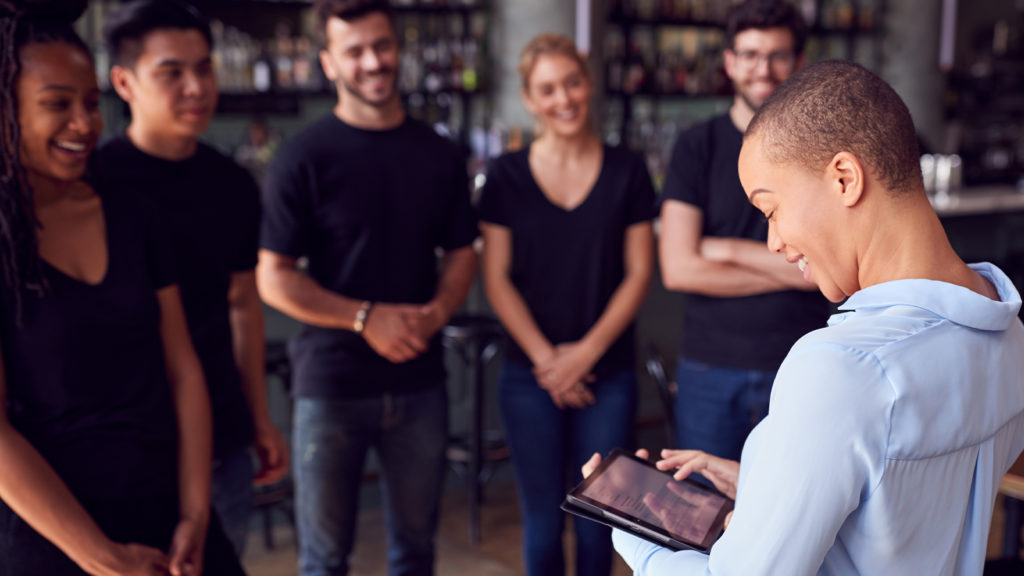In a conversation with Visier’s Ian Cook, Medallia Solution Principal Melissa Arronte dives deeper on how organizations can leverage the power of people data and employee experience data to thrive in this new world of work.
I recently spoke with Ian Cook, VP of People Analytics at Visier, and Jay Forman, an employee experience director here at Medallia, about how businesses can adapt to the service industry worker shortage by leveraging the power of people data and employee experience data. We touched on a lot of great topics, but I wanted to dive deeper on a few.
Here, I continue the conversation with Ian, this time on how to leverage people data to improve both employee and customer experiences, improving DEI beyond talent acquisition, and the future of work.
Tell us a little about yourself and how you made your way into the people analytics space.
I spent the early part of my career consulting to global organizations on HR strategy and change. The biggest challenge with this work was accessing the funding necessary to drive meaningful improvements in the business. The CHRO and CFO did not speak the same language. Data and analytics was in its infancy at this time and mostly focused on benchmarking. So I made it my mission to elevate the impact of HR on the business through the effective use of data to inform and guide business decisions about people. Twenty years later, we are starting to make real progress with HR leaders leveraging data to enact change at their organizations!
What is the difference between people data and employee experience data and why are they better together?
Employees are constantly navigating change: manager or team changes, pay changes, promotions, reorgs, and more. People data focuses on how these events affect both individuals and the groups they belong to, while experience data measures how these events impact how employees feel about work and how they perceive the organization.
If organizations truly want to put their people first and respond to changing employee expectations, organizations must effectively leverage people and experience data to thrive in the new world of work. On their own, each set of data tells an interesting but incomplete story — when layered together you can understand the emotions and perceptions that led to a specific event, like an employee exit or team change. Effectively leveraging both sets of data gives organizations the insight needed to create a great work experience, and in turn, great work outputs.
How can companies think about inclusion and belonging beyond talent acquisition?
One of the biggest calls for change that we’ve seen over the last year has been on CEOs and HR leaders to create more equitable workplaces. Visier has been helping customers drive real change in the diversity, equity, and inclusion practice for many years. A macro-level study of Visier customers demonstrated a significant increase in the percentage of women in leadership roles after Visier was implemented.
Organizations need to make the conversation about diversity tangible and broad. Leaders need quick access to their organization’s make up and the ability to share this with every people leader to set targets, and move DEI out of being an aspiration into being a core organizational focus with KPIs. Peer data is also a powerful tool — the ability to compare your organization against peers with timely and detailed benchmarks contributes to the CHRO’s capacity to engage the executive leadership team in setting meaningful goals and following through with departmental accountability.
Every organization is sitting on great source data about the diversity and equity within their business. Visier helps shape this data into meaningful answers that move from simple reporting to driving changes in action.

What are some key moments or events in the employee journey that companies should be looking at to understand the employee experience?
This is a point that is often missed in the whole conversation about experience. So many people view experience as an extension of engagement and assume that the data just needs to be captured once a year. This is the opposite of how things should be done.
Exactly like a consumer journey, you need to “listen” at key points during your employee’s journey. A major moment that has a significant impact on the person and the business is the onboarding and ramp-up phase. Turnover within the first year is always higher than any other area and can be reduced by building a richer understanding of how different people experience this transition, and developing multiple paths to align with these different needs.
Other key events are things like manager changes, or the exit of one or more people from the team you are on. You also have to be cognizant of the “halo” effect that can show up in surveys if they are positioned after a promotion or pay raise. The perceptions and emotions of employees change rapidly so the most important thing is to keep listening and to let people know that they are heard.
What are the challenges of connecting customer experience and employee experience data and what are the benefits of bridging that gap?
The key challenges of aligning employee data with customer experience and employee experience are related to the integration of multiple data sets. Often each data set will have its own structure, and without the proper tools to handle the proper alignment of structure and data, over time it becomes onerous, expensive, and slow to handcraft these types of analysis.
If this overhead is removed through smart use of technology and engaging with vendors who understand how to deliver these types of integrated insights, then the rewards are enormous. Everyone knows that employees create what customers experience. So it’s clear that the employees who do not have a great work experience struggle to deliver a great customer experience.
What is also key is being able to identify why and what is happening to or around the employee that is causing the negative perception. When you combine all this data, these insights mean you can not only identify challenging areas, you can identify why and take the appropriate actions. For example, frequent manager changes can be very frustrating and stressful for employees. Knowing that a group of employees have had three different managers in a year, and that this is impacting the customer experience, allows everyone to focus resources on solving the right challenges the right way.
What’s getting you excited about the future of work?
The one that is most important to me is that work is becoming more human, more people-centric — and the organizations that take bold steps to put their people first will win. Lots of shifts are aligning that allow people to truly get to work on what they are best at, and have the chance to continue growing and learning throughout their career. This was unimaginable when my parents were working and it has been available to a rare few during my career. Now it looks like it will be the norm for many when my kids start working.
Read the Definitive Guide to Employee Experience and learn how to leverage the power of people data and employee experience data to thrive in this new world of work.








